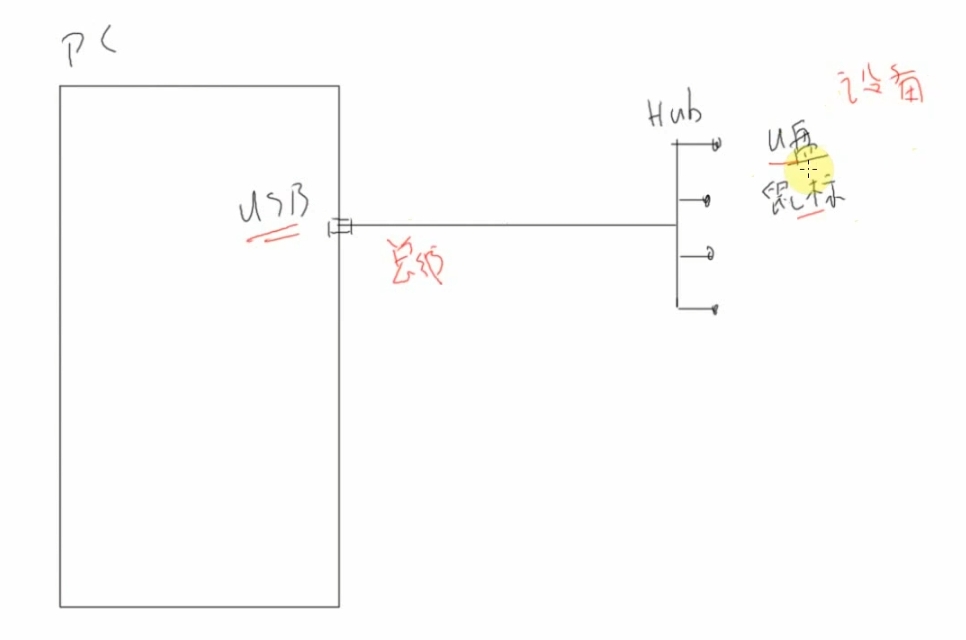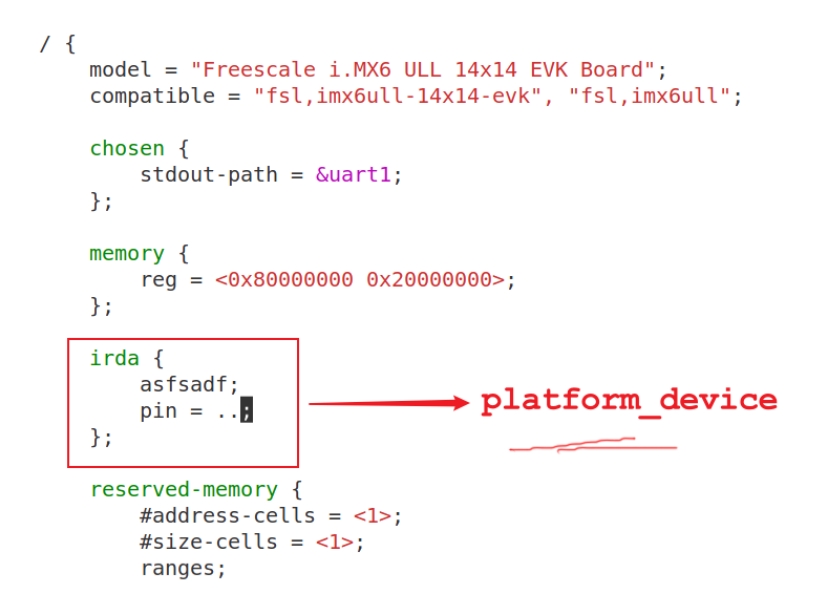平台总线驱动与设备树
1.平台设备总线驱动模型#
理论学习可以参考《第五篇 嵌入式Linux驱动开发基础知识》或者《应用开发完全手册》
总线#
虚拟总线platform_bus_type
什么是总线?物理总线:如一个usb连接hub

总线平台结构体如下图:platform_bus_type : platform_device_add(struct platform_device *pdev) , platform_driver_register(drv)
platform_driver_registe: 通用的代码
struct platform_device:含有硬件资源(寄存器地址、内存地址、中断号)
添加方式与基本流程#
platform_device_add(struct platform_device *pdev) 添加一个平台device:
- 把struct platform_device *pdev放入链表
- 去遍历驱动链表,看双方是否匹配(为设备寻找驱动程序)
- 如果匹配就调用platform_driver的probe函数
- 从platform_device 得到引脚编号
- 注册file_operations结构体(如字符设备驱动程序)
注:使用上述方式,将驱动程序拆分为驱动和设备资源两个部分,解决如硬件引脚变化需要去阅读修改源码的问题。
platform_driver_register(drv) 注册一个平台drv:
同样的,一个新的drv注册后,会去匹配对应的dev
如何比较drv和dev进行匹配#

参考《嵌入式Linux应用开发完全手册V5.1_IMX6ULL_Pro开发板》的 11.5 platform_device如何与platform_driver配对
判断顺序:
是否强制选择某个driver
比较
platform_device.driver_override和platform_driver.driver.name可以设置
platform_device的driver_override,强制选择某个platform_driver设备树信息
- 比较
platform_device.dev.of_node和platform_driver.driver.of_match_table由设备树节点转换得来的 platform_device 中,含有一个结构体:of_node。如果一个platform_driver支持设备树,它的platform_driver.driver.of_match_table是一个数组,类型如下:
- 首先,如果 of_match_table 中含有 compatible 值,就跟 dev 的 compatile属性比较,若一致则成功,否则返回失败;
- 然后,如果 of_match_table 中含有 type 值,就跟 dev 的 device_type 属性比较,若一致则成功,否则返回失败;
- 最后,如果 of_match_table 中含有 name 值,就跟 dev 的 name 属性比较,若一致则成功,否则返回失败。
- 而设备树中建议不再使用 devcie_type 和 name 属性,所以基本上只使用设备节点的
compatible属性来寻找匹配的platform_driver。platform_device_id
比较
platform_device.name和platform_driver.id_table[i].name,id_table中可能有多项。platform_driver.id_table 是“platform_device_id”指针,表示该 drv支持若干个 device,它里面列出了各个 device 的{.name, .driver_data},
其中的“name”表示该 drv 支持的设备的名字,driver_data 是些提供给该 device 的私有数据。
platform_device.name和platform_driver.driver.name
2.设备树#
不使用.c文件注册platform_device,因为每次修改都需要重新编译装载。
使用设备树。目的都是去构造一个platform_device结构体。
查看设备树:

uboot: SD卡里有设备树dtb读取到内存,有内核uImage读取到内存,启动内核(addr)会解析设备树文件,注册各种patform_device。
因此同一款芯片的不同产品,内核可以保持不变,设备树可以变化。

请点击左侧菜单(移动端为右下角)选择要查看的所有笔记吧。


